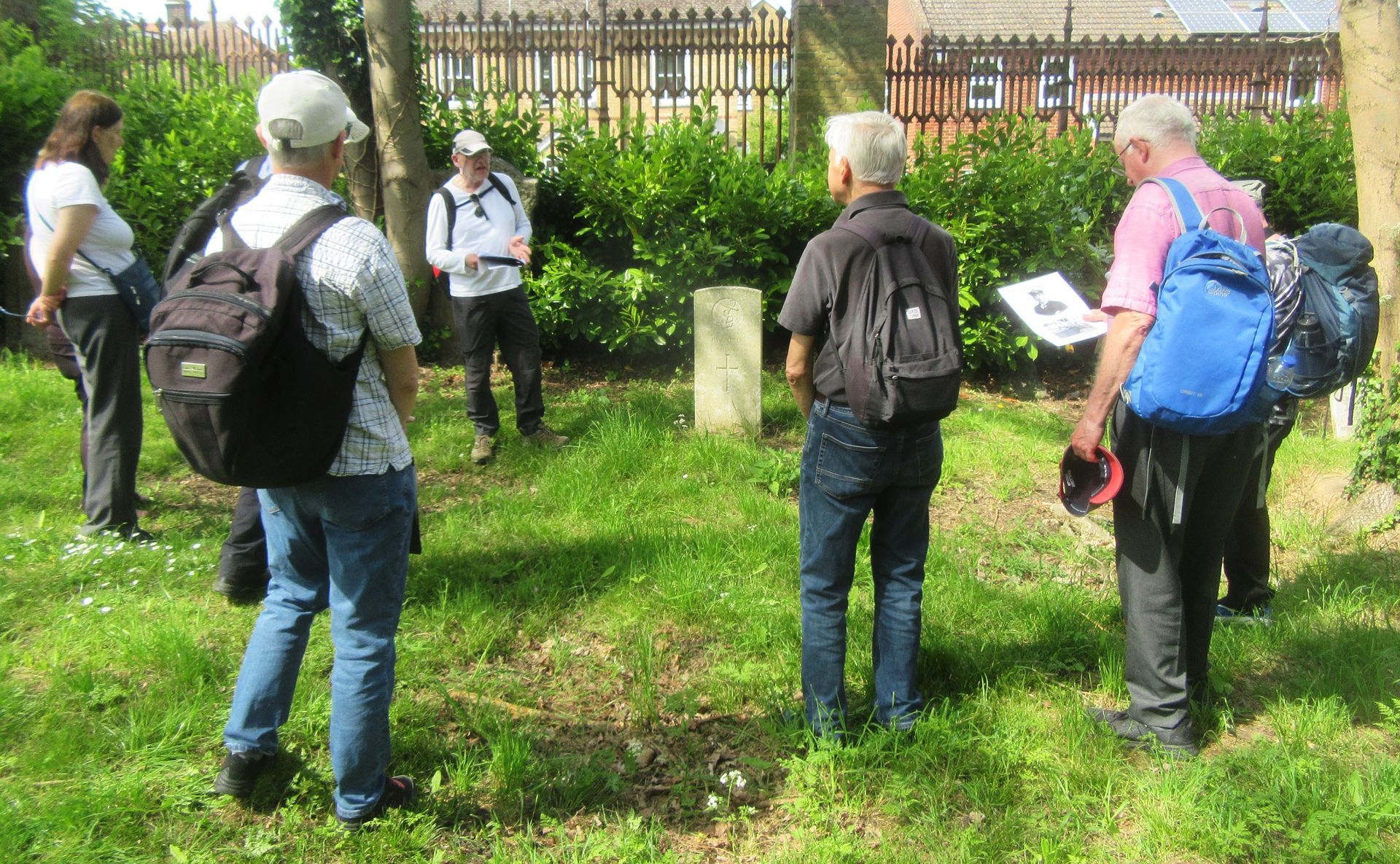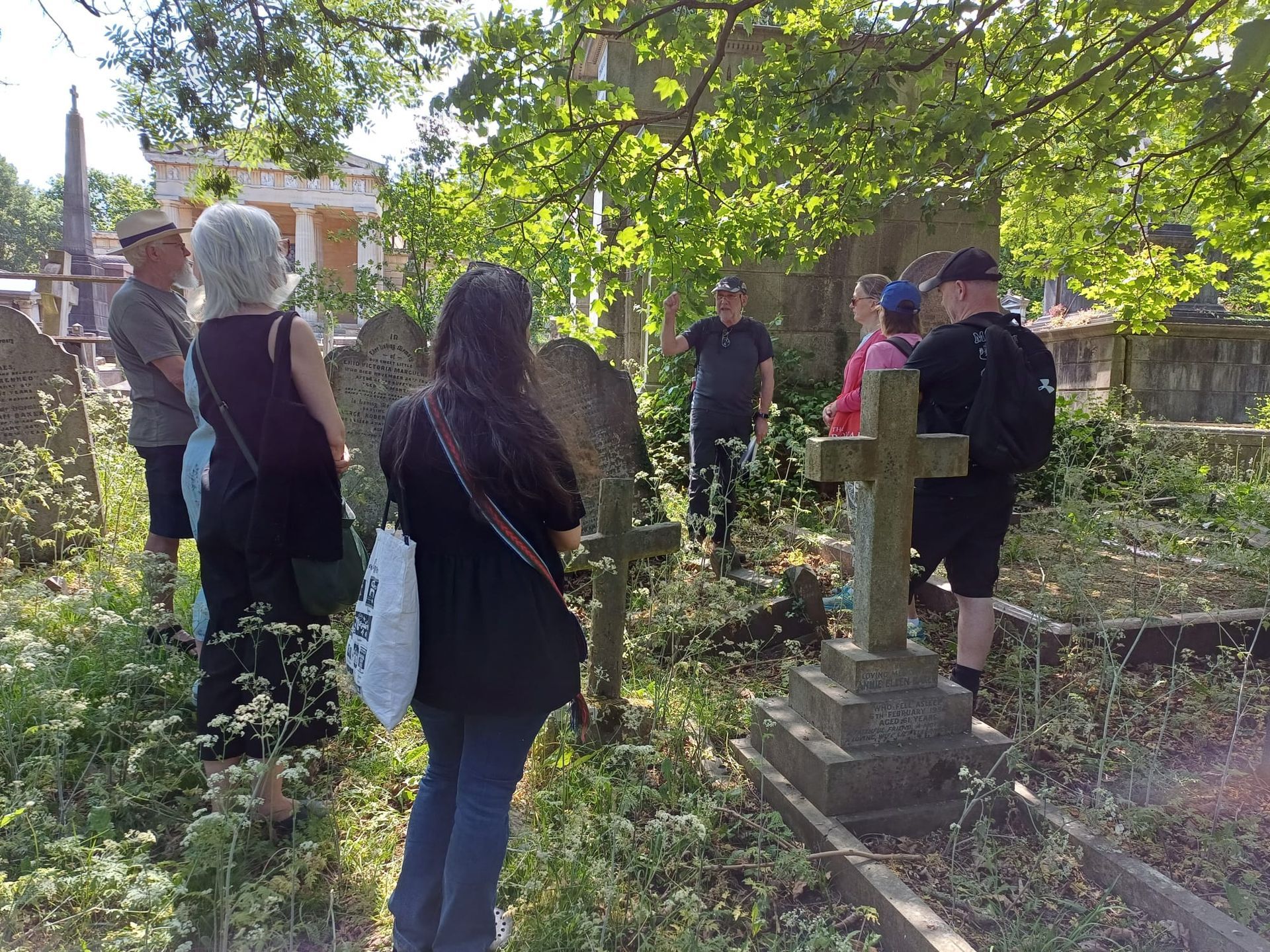West Norwood Cemetery
West Norwood Cemetery - one of London's 'Magnificent Seven' Victorian burial grounds
The South Metropolitan Cemetery , designed by Sir William Tite, was consecrated in 1837. Of the 'Magnificent Seven' cemeteries, Kensal Green had opened in 1833, Highgate would open in 1839, Abney Park, Brompton and Nunhead in 1840, and Tower Hamlets in 1841. It had Nonconformist and Anglican Chapels, with catacombs that could accommodate some 3,500 coffins. A particular jewel is the Greek Enclosure. It was largely full of monuments by 1900, and by 2000, there had been 164,000 burials in 42,000 plots, plus 34,000 cremations, south London's first crematorium having been built 1914-15. During the Second World War the lodge was destroyed by a V1 flying bomb, and the Nonconformist chapel was damaged by bombing and later demolished. The Anglican Chapel was demolished in 1960, although its catacombs remain. Tragically some 10-15,000 monuments were lost to Lambeth Council's 'lawn conversion' programme (having compulsorily purchased the cemetery in 1965) and the markers adorning the common graves were removed. This destruction was stopped in 1991 through the actions of the Friends of West Norwood Cemetery.
There are 65 listed monuments in the cemetery (seven Grade II*, the rest Grade II), 18 of which are in the Greek Enclosure. In addition the entrance arch, railings, gate piers and gates on the south and west sides of the cemetery, and the catacombs are all listed Grade II.
The Commonwealth War Graves Commission memorial screen wall
Behind the Cross of Sacrifice that stands in all CWGC cemeteries with more than 40 burials, and which was designed by Sir Reginald Blomfield in 1918, are the memorial panels that record service personnel who were either buried in common graves or cremated at Norwood.
The panel to the rear lists the First World War commemorations, some 39 in all; the two curved panels to either side contain 32 Second World War commemorations.
John Clarke and Peter Hodgkinson have been working together since 2018 on the military commemorations in the cemetery.
John is a freelance writer. Now retired, he is a former administrator and medical librarian. He is the historian of Brookwood Cemetery and the author of London’s Necropolis: A Guide to Brookwood Cemetery, (2nd ed. Stenlake, 2018); The Brookwood Necropolis Railway, (4th ed. Oakwood Press, 2006); An Introduction to Brookwood Cemetery, (3rd ed. 2019); Brookwood’s Mausolea, (2021); The Brookwood Military Cemeteries (2023); and The Columbarium, Brookwood Cemetery, (2010). In conjunction with Brian Parsons and Erkin Güney, his seventh book on Brookwood is The Glades of Remembrance (2010). He is also the co-author of The Bisley Camp Branch Line, (1986); and the St Cuthbert’s Church Guide, (2019).
John lives in south-west London, and has been both Vice-Chair and Chair of Friends of West Norwood Cemetery.
The First World War
Read Peter's taster article about the Great War commemorations in West Norwood Cemetery, published in Stand To!, the journal of the Western Front Association.
The Second World War
The Second Anglo-Boer War 1899-1902
Peter & John's third work on Norwood's military connections is available as a free download from the Friends' website.
There are only 15 known commemorations from this conflict in the cemetery, and this volume contains biographies of all.
It is hoped that others will be able to contribute further information in due course.
War walks in the cemetery
Every summer John & Peter lead walks in the cemetery visiting graves which educate us about the two world wars. To book, visit the Friends' website events page.
WW1 walk - Peter talks at the grave of Flight Lieutenant WW2 walk - Peter talks at the grave of the elderly
Harold Bower, who died when his flying boat crashed spinster Fox sisters, who died during the Blitz at their
on Lake Windermere in 1916. Camberwell home in September 1940.

